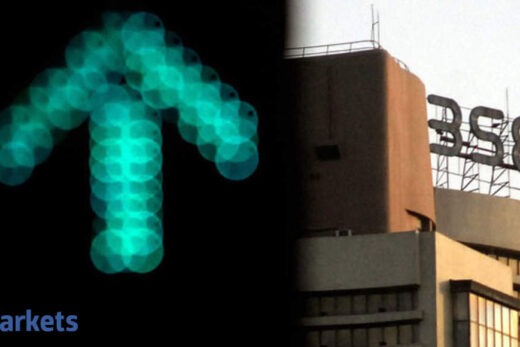This is an announcement markets globally have been anticipating for many months now. So, what is this tapering and why are financial markets so worried about it? Let’s check this out.
WHAT IS BOND BUYING
The US Fed is currently buying bonds worth $120 billion ($ 80 billion of Treasury Securities and $40 billion of mortgage-backed debt) since March 18, 2020. As on this date, the Fed had assets worth $4.7 trillion which has since increased to $7.8 trillion as on April 14, 2021. Fed is the central bank of the United States of America and is the most influential economic institution of the world. Its important function is to manage the total outstanding supply of the US dollar and its substitutes.
The Fed does not actually print money, but the majority of the American money supply is digitally credited or debited to the major banks. Once the Bank loan these money to the broader economy then real money is created. The Fed does this through Open Market Operations, where it buys or sells Treasury Bills to inject or absorb money. The Fed also uses Fractional Reserve Banking and the Money Multiplier effect to inject money into the system. So effectively $1 billion of reserves with banks will create $ 10 billion in new credit money in the economy. This process is called Quantitative Easing in the market parlance.
WHY DOES CENTRAL BANK BUY BONDS
When the economy is in downturn, like it was in 2008-09, or at the start of the epidemic, the banks stop giving loans as they are afraid that their loans will turn into NPAs. At such times, the central banks step in and reduce interest rates and buy bonds to induce liquidity into the economy. Basically, it increases money supply in the economy by swapping out bonds in exchange for cash. These are called Open Market Operations by the central banks. With interest rates at their lowest, banks do not get any interest for the idle funds (and for the extra liquidity) and are therefore induced to give loans to genuine borrowers to enable them to grow there business uplift the economy. The US Fed has an objective of maintaining a stable and growing economy. It does this by an expansionary policy (lowering interest rates) or by Quantitative Easing (buying bonds). Thus by buying the bonds, the Fed adds new money to the economy, serves to lower interest rates by bidding up fixed-income securities. Thus, it expands the central bank balance sheet.
WHAT DOES FEDERAL RESERVE MEAN WHEN IT TALKS ABOUT TAPERING
QE helps the economy by reducing the long-term interest rates, thus making business and mortgage borrowing cheaper thus giving a signal that the US Fed wants to support the economy. Tapering is the gradual slowing of the pace of the Fed’s large scale asset purchases. Once the tapering is complete then the Fed may go for reduction in the size of the balance sheet. The aim is to slowly remove the monetary stimulus.
CURRENT STATUS ON TAPERING AND TAPER TANTRUM
The Fed has in its monetary policy meeting or otherwise not yet expressly stated that it wants to start tapering. The last policy statement it had said that the economy has to make “substantial further progress” towards its goals before it starts tapering and after that brings interest rates back to normal. A few members of the Federal Open Market Committee (FOMC) have noted that the employment level remains below the pre-pandemic level and therefore suggesting that patience is needed. Other members have expressed concern about inflationary pressures and excessive risk-taking in the markets as a result of the Fed’s asset purchases.
The Fed has made clear that tapering will precede any increase in its target for short term rate of interest. So tapering not only reduces the amount of QE, it is also seen as a forewarning of tighter monetary policy to be pursued by the Fed.
The combination of projected reductions in asset purchases and the possibility of higher rates in 2013 led to a period of high volatility and rising rates in the bond markets – an episode that later became known as the taper tantrum. On May 21, 2013 Fed Chair Ben Bernanke gave the first public signal that a taper was on the horizon. His words surprised the markets and set off an increase in market interest rates, pushing the bond markets yield. Bernanke then elaborated on the plan of tapering and yields rose more substantially.
It had a great effect on the financial market and it drove capital outflows and currency depreciation especially in Emerging Markets such as Brazil, India, Indonesia, South Africa and Turkey. In December 2013 the Fed began reducing the pace of asset purchases from $85 billion per month to $75 billion per month.
Purchases were reduced by $10 billion at each subsequent meeting. The Asset Purchase programme ended in October 2014 and Fed began shrinking the balance sheet in October-2017. If one recalls the rupee fell from 54 to 68 in a span of three months, though the entire fall was not due to tapering but due to twin deficits (current account and fiscal) India was facing then.
WHAT IF FED STARTS TAPERING THIS YEAR
Though the Fed has till date not started tapering it has been making the markets well prepared for the same by tapering talk by some of the Fed officials. Thus the market will be more than ready by the time Fed actually starts tapering this year in contrast to in 2013 when Bernanke suddenly announced in May about tapering. Due to the announcement we could see some outflows from Emerging Markets like India but RBI has prepared the economy well enough by accumulating sufficient foreign ecchange reserves to the tune of $612 billion. The equity markets have risen to all-time highs and therefore some fall is imminent but with Retail Investors driving the markets and India’s economy doing relatively well, the stock markets will bounce back soon enough. So the effect of tapering should be relatively very less this time for India.
(Anil Kumar Bhansali is Head of Treasury at Finrex Treasury Advisors. Views are his own)



